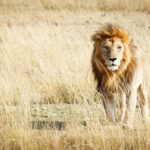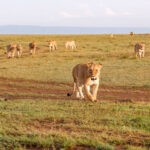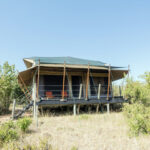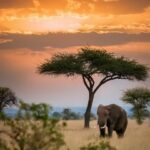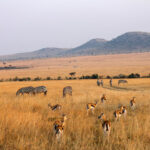Complete Mara Triangle camping guide with campsite options, fees, safety tips, and everything needed for an unforgettable safari adventure.
Mara Triangle Camping Guide: Everything You Need to Plan Your Adventure
The Mara Triangle camping offers some of Kenya’s most spectacular camping experiences, but proper planning makes the difference between a magical adventure and a challenging ordeal. This exclusive conservancy provides unique opportunities to sleep under African stars while listening to lions roar in the distance, creating memories that last a lifetime.
Camping in Masai Mara has evolved significantly over recent years, with the Mara Triangle leading conservation efforts while maintaining authentic wilderness experiences. Whether you’re a seasoned camper or planning your first African adventure, understanding the logistics, costs, and campsite options will help you make the most of this incredible destination.
From navigating Mara Triangle park fees to selecting the perfect campsite for your group, this comprehensive guide covers everything you need to plan an unforgettable camping adventure in one of Africa’s premier wildlife destinations.
Understanding Mara Triangle Camping Options
The Mara Triangle operates several designated camping areas that balance wildlife conservation with visitor access. Each campsite offers unique advantages depending on your preferences for amenities, location, and wildlife viewing opportunities.
Public Campsites vs. Private Facilities
Public camping facilities within the Mara Triangle provide basic amenities at reasonable costs, making them popular with budget-conscious travelers and adventure enthusiasts. These sites typically offer shared bathroom facilities, basic security, and designated camping areas with stunning views across the conservancy.
Private camping operations provide enhanced amenities including shower facilities, dining areas, and guided services. These options cost more but offer additional comfort and convenience for families or groups seeking upgraded experiences.
The conservancy model ensures that all camping revenue supports wildlife conservation and local community development, making every camping fee a direct contribution to sustainable tourism initiatives.
Essential Campsite Guide for the Mara Triangle
Hornbill Campsite: Riverside Paradise
Hornbill Campsite claims one of the most coveted positions in the conservancy, situated along the Mara River where wildlife congregates throughout the year. This location provides front-row access to river crossings during the Great Migration while offering year-round wildlife viewing opportunities.
The campsite features basic bathroom facilities, designated cooking areas, and spacious camping plots that accommodate various tent sizes. The riverside location means you’ll fall asleep to hippo calls and wake to spectacular sunrises over the water.
Security measures include ranger patrols and perimeter monitoring, though campers must follow strict guidelines regarding food storage and waste disposal. The proximity to water attracts diverse wildlife, creating incredible photography opportunities right from your campsite.
Kishanga Campsite: Elevated Views
Kishanga Campsite offers elevated positions with panoramic views across the Mara Triangle’s rolling grasslands. This higher elevation provides natural advantages for wildlife spotting while offering protection from seasonal flooding that affects lower-lying areas.
The campsite accommodates larger groups with multiple camping zones and adequate spacing between sites. Basic amenities include pit latrines, designated fire areas, and access to seasonal water sources during certain periods.
Wind exposure at elevated positions requires sturdy tent setup and proper guy-line anchoring. The elevated location provides spectacular sunrise and sunset photography opportunities while offering natural cooling during hot afternoons.
Kijito Campsite: Central Access Point
Kijito campsite provides strategic positioning for accessing diverse habitats throughout the conservancy. Located centrally within the Mara Triangle, this site offers easy access to grasslands, riverine forests, and rocky outcrops that support different wildlife species.
The facility includes basic toilet facilities and designated camping areas with adequate spacing for privacy and safety. Water availability varies seasonally, so campers should plan accordingly and bring sufficient supplies for their entire stay.
This campsite serves as an excellent base for self-drive safaris and walking expeditions with registered guides. The central location minimizes travel time to prime wildlife viewing areas while providing access to multiple habitat types.
Olarro Campsite: Secluded Wilderness
Olarro campsite appeals to adventurers seeking maximum wilderness immersion with minimal facilities and maximum privacy. This remote location offers authentic bush camping experiences for self-sufficient groups comfortable with basic conditions.
The site provides designated camping areas with basic pit toilet facilities but limited infrastructure beyond essential safety features. Campers must bring all water, food, and equipment needed for their entire stay.
Wildlife activity around Olarro remains high due to reduced human traffic, creating excellent opportunities for authentic animal encounters. The remote location requires careful planning and emergency preparedness but rewards visitors with unparalleled wilderness experiences.
Dirisha Campsite: Family-Friendly Option
Dirisha campsite caters to families and groups seeking camping experiences with enhanced safety features and convenient amenities. The facility offers improved toilet facilities, designated cooking areas, and better security monitoring than more remote locations.
Multiple camping zones accommodate different group sizes while maintaining appropriate spacing for privacy and safety. The campsite’s design considers families with children, offering safer areas away from cliff edges or waterways.
Security patrols occur regularly, and emergency communication systems provide additional peace of mind for families camping with young children. The location still offers excellent wildlife viewing while prioritizing visitor safety and convenience.
Mara Triangle Park Fees and Permit Requirements
Understanding the fee structure for camping in the Mara Triangle ensures proper budgeting and legal compliance during your visit. The conservancy operates a comprehensive fee system that supports conservation efforts and community development.
Camping Fee Structure
Daily camping fees vary based on nationality, with different rates for Kenyan residents, East African residents, and international visitors. Current fee structures change annually, so verify exact amounts before your trip to ensure accurate budgeting.
Park entry fees apply in addition to camping fees, creating total daily costs that include both accommodation and access charges. Group discounts may apply for extended stays or larger parties, making longer trips more economical per person.
Payment methods include cash payments at park gates or advance booking through authorized agents. Credit card facilities remain limited, so plan to bring sufficient cash or arrange payments through tour operators who accept electronic payments.
Permit and Documentation Requirements
All campers require valid identification and completed registration forms upon arrival. International visitors need passports while Kenyan residents can use national identification cards for registration purposes.
Camping permits specify exact dates, campsite assignments, and group sizes. Changes to permits require advance approval and may incur additional fees depending on availability and timing.
Vehicle permits apply to all motorized transport entering the conservancy. Self-drive visitors need valid driving licenses and vehicle registration documents, while international visitors may require international driving permits.
Using the Mara Triangle Map for Trip Planning
A detailed Mara Triangle map proves essential for planning camping locations, game drive routes, and understanding the conservancy’s geography. Official maps highlight campsite locations, road networks, and key landmarks that aid navigation.
Navigation and Route Planning
The conservancy road network includes both all-weather routes and seasonal tracks that become impassable during heavy rains. Planning routes using current maps prevents getting stuck in remote areas during adverse weather conditions.
GPS coordinates for campsites help with precise navigation, especially when arriving after dark or during low visibility conditions. Download offline maps before your trip, as cellular coverage remains spotty in many areas.
Emergency evacuation routes and communication points appear on detailed maps, providing crucial information for safety planning. Understanding these routes before emergencies occur improves response times and outcomes.
Wildlife Viewing Area Identification
Maps identify prime wildlife viewing areas, watering points, and migration routes that help plan game drives and walking expeditions. Understanding animal movement patterns improves wildlife encounter success rates.
Seasonal variations in animal distributions mean that maps showing different time periods provide valuable planning information. Wet season maps differ significantly from dry season versions due to changing water availability and grazing patterns.
Restricted areas and buffer zones appear on official maps, helping visitors avoid violations that result in fines or expulsion from the conservancy. Respecting these boundaries protects sensitive habitats and maintains conservation integrity.
Essential Camping Equipment and Supplies
Successful camping in the Mara Triangle requires specific equipment designed for African conditions and wildlife encounters. Proper preparation prevents discomfort and safety issues during your adventure.
Tent and Sleeping Requirements
Four-season tents handle the variable weather conditions encountered in the Mara Triangle, from intense sun to sudden thunderstorms. UV-resistant materials prevent tent degradation during extended exposure to African sunlight.
Elevated sleeping systems keep campers off the ground, providing protection from insects, small reptiles, and moisture while improving comfort during long nights. Quality sleeping bags rated for temperature variations ensure comfortable rest regardless of weather changes.
Ground tarps provide additional moisture protection and create clean areas for equipment storage and meal preparation. Multiple tarps allow flexible campsite organization while protecting gear from dust and rain.
Cooking and Food Storage
Portable camping stoves provide reliable cooking capabilities while minimizing fire risks in dry conditions. Backup fuel supplies ensure cooking capability throughout extended trips without resupply opportunities.
Secure food storage prevents wildlife encounters that endanger both animals and campers. Hard-sided containers or proper hanging systems keep food away from curious elephants, baboons, and other opportunistic species.
Water purification systems ensure safe drinking water when natural sources require treatment. Multiple purification methods provide backup systems if primary methods fail or become damaged during the trip.
Safety and Communication Equipment
Emergency communication devices enable contact with park rangers or evacuation services during medical emergencies or vehicle breakdowns. Satellite communicators work in areas without cellular coverage.
First aid supplies tailored for wilderness conditions include treatments for cuts, burns, insect stings, and potential wildlife encounters. Training in wilderness first aid improves emergency response capabilities.
Powerful flashlights and backup batteries ensure safe movement around campsites after dark while preventing accidental wildlife encounters. Red lights preserve night vision while minimizing disturbance to nocturnal animals.
Safety Guidelines for Mara Triangle Camping
Wildlife safety requires constant awareness and adherence to established protocols that protect both visitors and animals. Understanding animal behavior and appropriate responses prevents dangerous situations.
Wildlife Encounter Protocols
Never approach wildlife on foot, regardless of species size or apparent docility. Maintain minimum distances of 25 meters from elephants and buffalo, and never position yourself between animals and water sources or escape routes.
Secure all food, toiletries, and scented items in vehicles or proper storage containers. Elephants and baboons investigate campsites for food, creating dangerous situations when items are left accessible.
If wildlife enters your campsite, remain calm and slowly back away to a safe distance. Never run unless specifically instructed by guides, as sudden movements can trigger chase responses in some species.
Campsite Security Measures
Establish clear boundaries around your campsite using natural landmarks or temporary markers that help identify your space during darkness. Avoid camping in animal trails or near water sources where wildlife traffic occurs regularly.
Keep vehicles unlocked and keys accessible for emergency evacuation if dangerous wildlife approaches your campsite. Practice emergency evacuation procedures with your group before situations require immediate action.
Store all waste in sealed containers until proper disposal opportunities arise. Improperly disposed waste attracts scavenging animals and creates ongoing safety hazards for future campers.
Emergency Preparedness
Share detailed itineraries with reliable contacts who can initiate rescue operations if you fail to check in as scheduled. Include GPS coordinates, planned routes, and emergency contact information for park authorities.
Carry comprehensive emergency supplies including extra food, water, medical supplies, and communication equipment. Plan for extended delays due to weather, vehicle problems, or medical emergencies.
Understand evacuation procedures and nearest medical facilities before emergencies occur. Medical evacuations from remote camping areas take time, making immediate first aid capabilities crucial for serious injuries or illnesses.
Best Times to Visit for Camping
Seasonal variations significantly impact camping experiences in the Mara Triangle, with distinct advantages and challenges during different periods. Understanding these patterns helps optimize trip timing for your priorities.
Great Migration Season (July-October)
Peak migration season offers incredible wildlife viewing opportunities but brings increased visitor numbers and higher costs. Camping during this period requires advance reservations and premium pricing for all services.
River crossing events create spectacular viewing opportunities from nearby campsites, but unpredictable timing means some visitors miss major crossings despite perfect timing. Multiple nights increase crossing observation chances.
Weather remains relatively dry during migration season, creating ideal camping conditions with minimal rain disruption. Dust levels increase due to animal activity and dry conditions, requiring appropriate equipment and preparation.
Shoulder Seasons (May-June, November-December)
Shoulder seasons provide excellent value with reduced crowds while maintaining good wildlife viewing opportunities. Camping costs decrease significantly compared to peak season pricing.
Rainfall increases during shoulder seasons, requiring waterproof equipment and flexible planning for weather delays. Some roads become impassable during heavy rains, limiting access to remote campsites.
Wildlife concentrations remain high around permanent water sources, creating excellent viewing opportunities with fewer competing vehicles and tourists.
Dry Season Advantages (January-March)
Clear skies and minimal rainfall create ideal camping conditions during the dry season, though wildlife distributions change as animals follow water sources. Camping remains comfortable with predictable weather patterns.
Vegetation dies back during dry periods, improving wildlife visibility and photography opportunities. Animals concentrate around remaining water sources, creating predictable viewing locations.
Temperatures reach annual peaks during dry season periods, requiring adequate sun protection and cooling strategies for comfortable camping experiences.
Planning Your Mara Triangle Camping Adventure
Successful camping requires detailed advance planning that considers permits, equipment, supplies, and contingency arrangements for various scenarios.
Booking and Reservation Process
Reserve campsites well in advance, especially during peak migration season when availability becomes extremely limited. Contact conservancy authorities directly or work through licensed tour operators for reservation assistance.
Confirm all fees, payment methods, and cancellation policies before finalizing reservations. Policies change periodically, and misunderstandings about costs or requirements can disrupt trip plans.
Obtain written confirmation of all reservations including dates, campsite assignments, group sizes, and special requirements. Keep multiple copies of confirmation documents during your trip.
Group Size and Composition Considerations
Smaller groups enjoy more flexibility for campsite selection and activity planning while requiring less coordination for daily logistics. Larger groups benefit from shared costs but need more complex planning and coordination.
Consider experience levels within your group when selecting campsites and planning activities. Inexperienced campers need more support and safety oversight than seasoned wilderness veterans.
Plan activities that accommodate different interests and physical capabilities within your group. Some members may prefer relaxing in camp while others want intensive wildlife viewing or hiking opportunities.
Your Mara Triangle camping adventure awaits with proper planning and preparation. This incredible conservancy offers unmatched opportunities to experience African wildlife in their natural habitat while supporting conservation efforts that protect these ecosystems for future generations.
Remember that camping in the Mara Triangle represents more than just affordable accommodation – it provides authentic connections with Africa’s wilderness that create lifelong memories and conservation awareness. Every night spent under these ancient stars contributes directly to the preservation of one of the world’s most important wildlife ecosystems.


